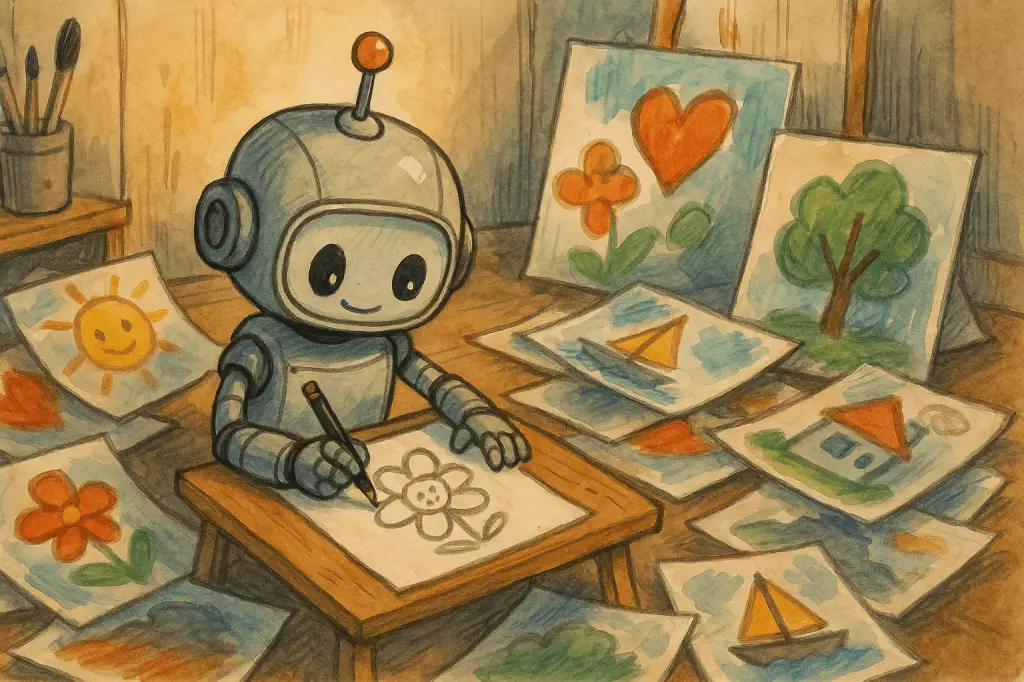With the rapid advancement of artificial intelligence technologies, businesses now find themselves at the cusp of a transformative change in how they generate visual content. OpenAI has taken a monumental step forward by releasing its API for the gpt-image-1 model, enabling organizations to generate high-quality images directly tailored to their needs. This innovative approach not only streamlines the creative process but also integrates cutting-edge AI capabilities into the workflows of various enterprises.
In a world saturated with generic stock images, the potential for AI-generated visuals serves as a breath of fresh air. The ability of the gpt-image-1 model to produce images that reflect specific styles, adhere to custom guidelines, and accurately depict text opens a Pandora’s box of possibilities for content creators, marketers, and designers. Each image can be created to match the unique branding of a company, fostering a level of authenticity and originality that stock images simply cannot provide.
Cost Considerations: Balancing Quality and Affordability
While the advantages of utilizing image generation through an advanced model like gpt-image-1 are apparent, businesses must also navigate the financial implications. OpenAI’s pricing structure separates costs for text input and image output, demanding $5 per million tokens for text and a hefty $40 for each million tokens of generated images. In comparison, competitors like Stability AI and Google’s Imagen have introduced more flexible credit-based systems that can significantly lower the entry barrier for smaller businesses.
This dichotomy presents a crucial crossroads for organizations. While investing in high-quality imagery can yield impressive dividends in marketing and brand identity, the steep costs associated with OpenAI’s offerings can deter smaller ventures from leveraging this advanced technology. The challenge lies in justifying the expenditure against the potential returns on investment, prompting businesses to carefully consider their budget allocations for AI-generated content.
The Challenge of Viral Trends
The enthusiasm for AI-generated imagery comes with its own set of challenges. After the launch of the image generation feature, social media was quickly flooded with similar Ghibli-inspired images, showcasing the potential popularity of the tool but also reflecting a phenomenon of creative fatigue. The ease with which users can generate images led to a saturation of similar content that could undermine the novelty and uniqueness of the visuals.
OpenAI CEO Sam Altman’s amusing remark about the company’s GPUs “melting” captures the frenzy surrounding this trend. While the popularity of this feature may have delighted many, it also highlights a sobering truth: technology that breeds innovation can also inadvertently lead to a lack of originality as users chase after viral appeal instead of creating unique content that resonates personally with their audiences.
Integrating Seamlessly Into Established Platforms
The potential for companies to integrate the gpt-image-1 model into existing platforms cannot be overstated. Organizations like Canva, GoDaddy, and Airtable are already exploring how they can employ this AI-powered image generation to enhance their services, streamline creative workflows, and deliver bespoke imagery directly to their customers. This seamless integration encourages a culture of innovation among enterprises, allowing them to stay competitive in an increasingly digital landscape.
Moreover, the inclusion of metadata with images generated through this model guarantees authenticity, tracking ownership and labeling content as AI-generated. This cautious approach to the ethical considerations surrounding AI imagery lends a layer of legitimacy to businesses using these tools. As companies tread carefully through the landscape of intellectual property and content authenticity, such measures can help protect their innovations and foster trust with consumers.
Looking Ahead: The Future of AI in Visual Content Creation
The advent of OpenAI’s image generation capabilities signals just the beginning of a new era in visual content creation. As businesses adjust to these revolutionary tools, the industry is poised for an evolution, with AI playing an indispensable role in fostering creativity and efficiency. The challenge, however, will be harnessing this technology in a way that prioritizes originality and diversification rather than converging towards uniformity.
Amid these changes, businesses must also anticipate consumer sentiments towards AI-generated content. As audiences grow increasingly aware of the nuances concerning artificial intelligence in creative industries, transparency and authenticity will become crucial factors. Moving forward, the challenge will be not just to create striking visuals but to do so in a way that resonates deeply with audiences, ensuring both their engagement and trust.

